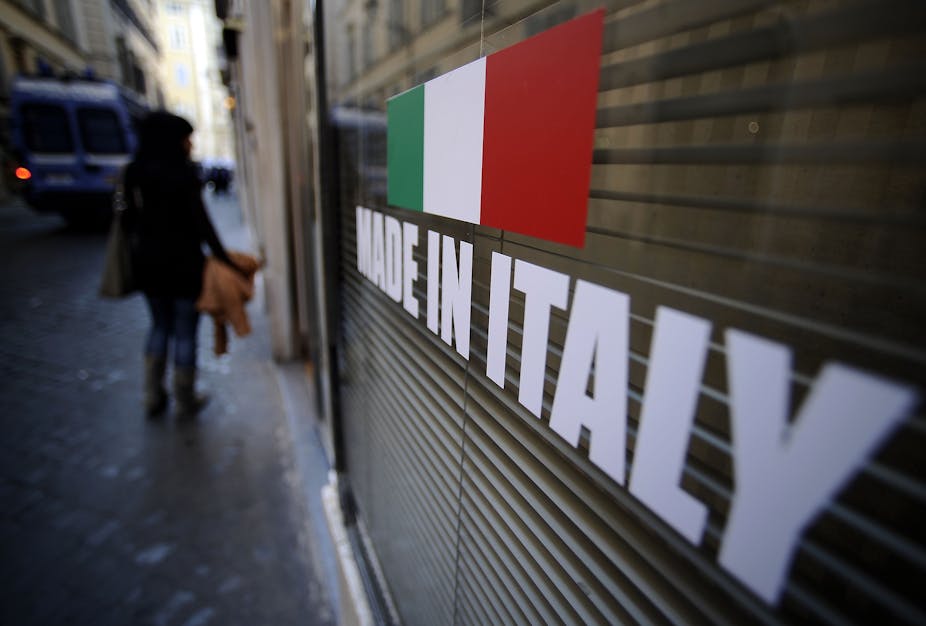During protests in Rome last month, as groups of hooded protesters clashed with the police, set cars on fire, and smashed bank windows around the Piazza San Giovanni, two large speakers installed on a truck pumped a loud rap that obsessively repeated the same word: insolvenza (insolvency).
Those who danced around the truck carried placards rejecting the government’s “austerity plan” and the “interference” of international financial institutions in Italian economic policy.
What the protesters failed to understand was that a decision of the government to become insolvent, and hence to default on its debt, would dramatically hurt lower and middle-lower class Italians who hold government bonds directly or indirectly through investment funds and retirement plans.
At the same time, foreign interference, which takes the form of recommendations and requests from European institutions on the future course of Italian economic and fiscal policy, is inevitable (and perhaps even desirable). It occurs in the context of a process of European integration, where every country delegates part of its sovereignty to supranational institutions and where the actions of each country have consequences for all the others.
But leaving the rhetoric aside, these protests offer the opportunity to reflect on the role of European economic and monetary integration in the current Italian debt crisis.
A recurrent argument goes that debt crises and contagion effects from Greece to the other countries arise from the nature of the monetary union, rather than problems within domestic economies.

Certainly, the Eurozone is a very peculiar, and for many respects incomplete, structure. It is a common currency arrangement with no equivalent fiscal policy counterpart, supranational institutions that are not specifically accountable to citizens, and a central bank that does not act as the lender of last resort.
Each of these features is a potential source of problems. Yet, one should be careful before shifting the blame for the Italian crisis on the common currency.
Long-term problems
First of all, in spite of the flaws in its institutional construct, the euro has proven to be a rather solid currency both domestically and on the international markets: prices in the Eurozone are fairly stable and the value of the euro against the US dollar (the world reference currency) has grown stronger over time.
It is therefore difficult to argue that Italian debt is under attack because markets and investors lack confidence in the euro. In fact, the primary causes of the debt crisis are Italy’s own weaknesses, primarily the shaky public finance position and the persistently sluggish macroeconomic performance.
The origins of the Italian debt problem go back in time well before the euro existed.
In the 1980s, fragile multiparty governments used public expenditure to cement the ruling coalition and to achieve a stable compromise with the Communist-led opposition.
The stock of debt as a portion of GDP grew above 100% a decade before the adoption of the euro, with a peak around 120% in the mid 1990s. Subsequently, the fiscal stabilisation efforts required to participate in the Eurozone led to a decline in fiscal deficits.
Correspondingly, the stock of debt decreased and achieved a minimum of 103% just before the 2008 global financial crisis.
Since then, the need to use fiscal policy to provide a stimulus to the economy has resulted in a sharp increase in public expenditure and deficit, which in turn have driven the stock of debt up again.
While Italy has so far been punctual in servicing its debt, its current public finance position, summarised by an estimated deficit for 2011 above 4% and a debt-to-GDP ratio that has gone back to above 120%, is certainly a cause of concern.
The weak macroeconomic performance of Italy is most evident in the growth and unemployment data. The average annual growth rate of GDP has declined from 2% in 1980s, to 1.4% in the 1990s, to 0.5% in 2000s.

These are extremely low figures, even in the context of the already weak growth performance of the Eurozone. Unemployment is above 8%, after having reached a peak of 12% in the late 1990s. But the national average masks sharp differences between north and south (unemployment in the south is 13.5%) and across age groups (unemployment among people aged under 24 is around 30%).
Structural changes needed
What Italy needs to relaunch its economy is a set of structural interventions, including the reforms of the public administration, justice system, pension system, and labour market legislation. It needs policies to strengthen competition in key sectors and markets, and a coherent plan of public investments to upgrade its infrastructure.
Very little progress on these interventions, if any progress at all, has been achieved in the past two decades. But again, this is primarily the consequence of domestic weaknesses, most notably a fragmented political landscape under Prime Minister Silvio Berlusconi characterised by frequent stalemates and vetoes, rather than a fault of the Eurozone.
The road out of this crisis has to pass through fiscal tightening and reforms, as the Italian authorities have also recognised in their recent negotiations with the European partners. Whether the current government and coalition can effectively walk down this road is to be seen.
A more technically focused government might have better chances, if only a new coalition willing to support such a government (and the reform it will have to promote) could be identified.
In the future, once the pressure on the debt has eased and the public budget position has been improved, Italian fiscal authorities should start running fiscal policy more counter-cyclically.
This means that times of expansions should be exploited to create budget surpluses that can then be used to finance fiscal stimuli in times of recessions.
This intuitive recommendation is probably valid for any country, but it is often overlooked in practice and the fiscal rules embedded in the European economic and monetary framework certainly do not facilitate the adoption of a counter-cyclical fiscal policy stance.
So here is, finally, something to blame the euro for.

